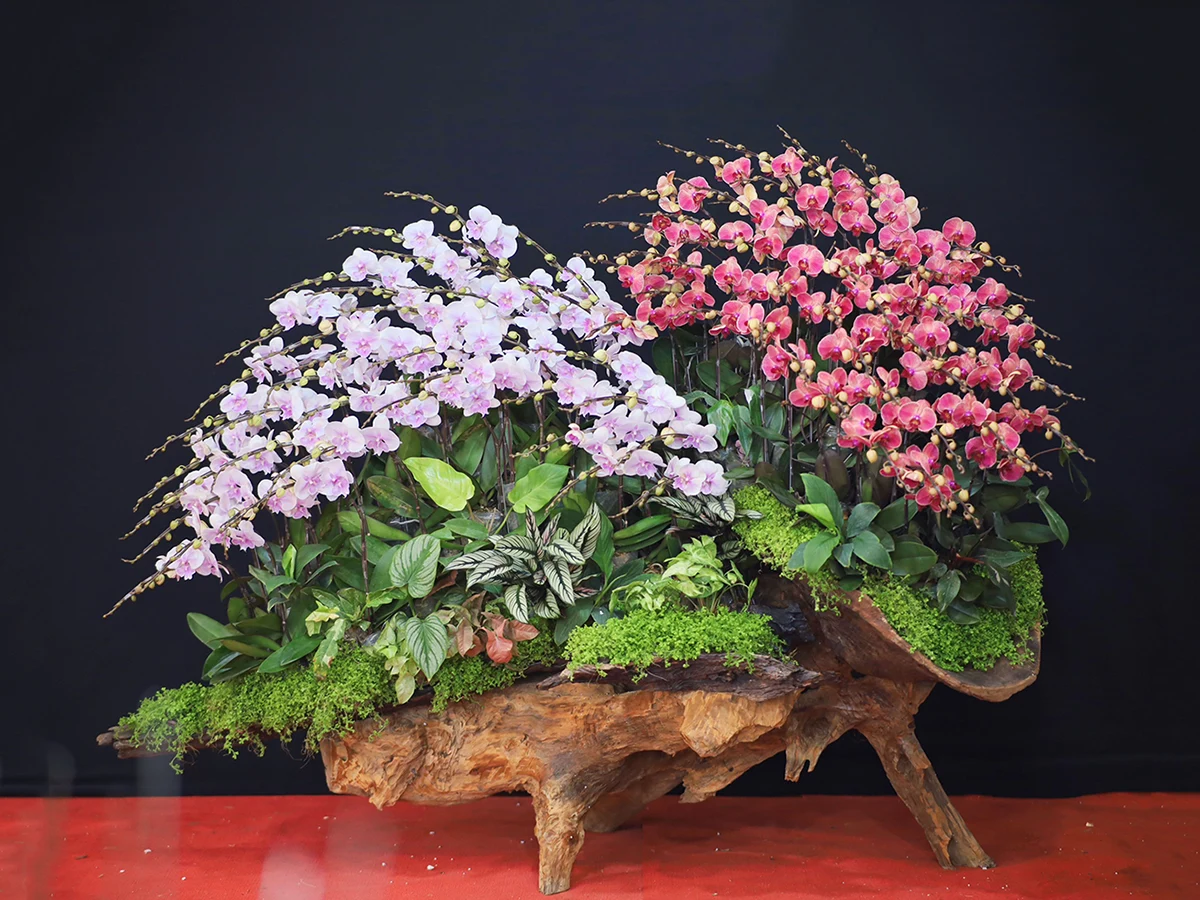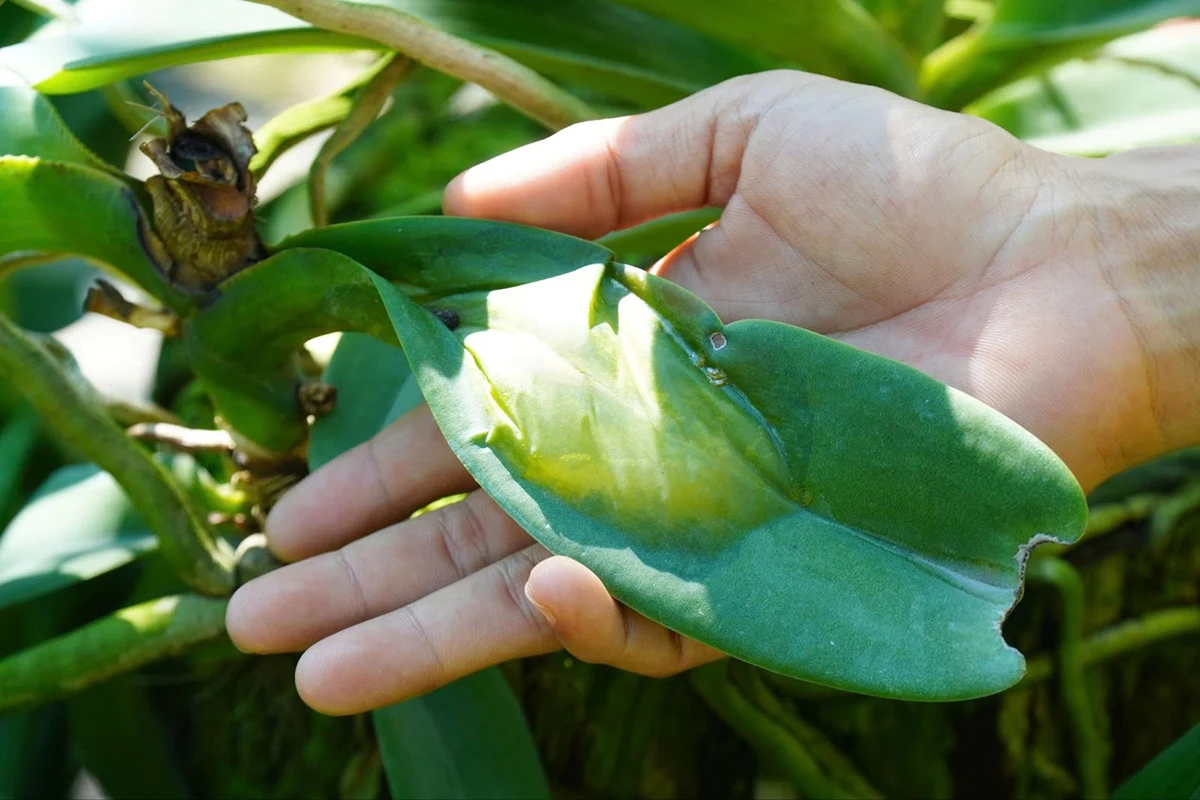Orchids captivate with their exotic beauty and delicate blooms, making them a favorite for indoor gardeners. Whether you’re new to orchid care or a seasoned enthusiast, mastering their needs ensures stunning flowers year after year.
This guide from BTA Feng Shui offers expert tips on orchid care, covering light, watering, fertilizing, repotting, and more, with a touch of Feng Shui wisdom to enhance your home’s energy. Let’s dive into creating the perfect environment for your orchids to thrive.
Orchid Overview: Beauty and Symbolism
Orchids (Orchidaceae) are a diverse family of over 30,000 species and 100,000 hybrids, prized for their vibrant colors and unique forms. Popular varieties like Phalaenopsis, Cattleya, Cymbidium, and Dendrobium grace homes with elegance.
Beyond aesthetics, orchids symbolize love, beauty, and prosperity in Feng Shui, promoting harmony and positive energy when placed thoughtfully in your space.
Key Information:
- Common Names: Orchid, moth orchid, corsage orchid, boat orchid
- Botanical Name: Orchidaceae
- Family: Orchidaceae
- Plant Type: Perennial, herbaceous, often epiphytic
- Mature Size: 1–3 ft. tall, 6–12 in. wide indoors
- Sun Exposure: Bright, indirect light
- Soil Type: Well-draining orchid bark mix, sphagnum moss, or perlite
- Soil pH: 5.5–6.5 (Slightly acidic)
- Bloom Time: Varies by species; typically 2–4 months
- Flower Color: White, pink, purple, yellow, red, orange, green
- Hardiness Zones: 5–11 (USDA)
- Native Area: Tropical regions of Asia, Africa, Australia, Americas
- Toxicity: Non-toxic to pets (ASPCA)
How to Care for Orchids: Essential Tips
Orchids thrive with the right balance of light, water, humidity, and nutrients. Here’s how to care for your orchids indoors to ensure vibrant growth and blooms.
Light Requirements for Orchids
Orchids need bright, indirect light to produce stunning blooms. Place them near east-facing windows for gentle morning sun or south-facing windows with sheer curtains to diffuse light. Avoid direct sunlight, which can scorch leaves, causing red tinges or burns.
For example, Phalaenopsis orchids prefer 1,000–2,000 foot-candles of light, while Cattleya can handle slightly more. If leaves turn dark green, they need more light; pale or yellow leaves suggest too much.
Tip: Use grow lights (full-spectrum LED) for consistent light in low-light spaces, maintaining 12–14 hours daily.
How to Water Orchids Correctly
Watering orchids is critical, as overwatering is the leading cause of failure. Orchids, especially epiphytes like Phalaenopsis, absorb water through roots and minimally through leaves.
Water thoroughly once a week during the growing season (spring/summer), allowing the potting medium to dry out slightly between waterings. In winter, reduce to every 10–14 days.
- Check Roots: Plump, green, or white roots are healthy; shriveled, gray roots need water; black or mushy roots indicate rot.
- Method: Soak the pot in room-temperature water for 10–15 minutes, then drain completely. Avoid letting the crown (where leaves meet) stay wet to prevent rot.
- Feng Shui Note: Place orchids near water elements, like a small fountain, to enhance calming energy, but ensure good drainage.
Orchid Potting Media and Repotting
Repotting orchids every 1–2 years refreshes the medium and supports growth. Use a specialized orchid mix (bark, perlite, charcoal) rather than regular potting soil, which suffocates roots. Repotting an orchid is best done after flowering.
Steps:
- Gently remove the orchid from its pot, shaking off old medium.
- Trim dead or rotted roots with sterilized scissors.
- Place in a slightly larger, porous pot (e.g., terracotta or slotted orchid pots).
- Fill with fresh orchid mix, securing roots without compacting.
- Water lightly and stake if needed for stability.
Tip: Repot in spring to align with the plant’s growth cycle and Feng Shui’s renewal energy.
Fertilizing Orchids for Healthy Growth
Orchid fertilizer boosts root, leaf, and flower development. Use a balanced orchid-specific fertilizer (e.g., 20-20-20) diluted to half-strength every two weeks during spring and summer. Switch to a high-phosphorus formula (10-30-20) in fall to encourage blooms. Avoid fertilizing in winter when most orchids are dormant.
- Water Quality: Use rainwater or distilled water (<175 ppm dissolved solids) to prevent salt buildup, which can burn roots.
- Feng Shui Insight: Healthy, vibrant orchids symbolize prosperity—place them in the wealth corner (southeast) of your home to amplify abundance.
Temperature and Humidity for Orchids
Orchids thrive in temperatures between 65–85°F (18–29°C) with a slight nighttime drop (10–15°F) to mimic natural conditions. Humidity should range from 40–70%, ideal for epiphytic orchids like Vanda or Oncidium.
Indoor humidity is often low, so use a humidifier or pebble tray with water (ensure the pot doesn’t sit in water).
Tip: Mist leaves lightly in the morning for epiphytic orchids, but avoid over-misting terrestrials like Cymbidium, which rely on root water uptake.
Air Circulation for Orchid Health
Good air movement prevents fungal issues and regulates moisture. Use a small fan to create gentle airflow, especially in humid environments like greenhouses. Avoid strong drafts or placing orchids near heating vents, which dry them out.
Tip: In Feng Shui, airflow promotes energy flow (chi). Position orchids where air circulates freely to enhance harmony.
See also:
- Ultimate Guide to Fern Care: Indoor & Outdoor Tips
- How to Grow and Care for Peonies: Feng Shui for Prosperity
- Bougainvillea in Feng Shui: Planting and Care Guide
Orchid Care After Flowering
After blooms fade, proper care encourages reblooming. For Phalaenopsis, cut the flower spike just above the first node below the lowest bloom if it’s still green—this may prompt a new bloom in 6–9 weeks. If brown, cut back to the base. For Cymbidium or Dendrobium, remove the entire spike.
Tip: Maintain care routines but reduce watering and fertilizing slightly during dormancy. Place in the relationship corner (southwest) to foster love and connection.
Common Orchid Pests and Diseases
Orchids face pests like aphids, mealybugs, spider mites, and scale, as well as fungal issues like root rot or black spots on leaves. Inspect regularly for signs like sticky residue or webbing.
Treatment:
- Pests: Spray with insecticidal soap or neem oil; wipe leaves gently.
- Fungal Issues: Improve drainage, reduce watering, and apply orchid-safe fungicide.
Prevention: Ensure good airflow, avoid overwatering, and maintain clean tools.
Troubleshooting Common Orchid Problems
- Wrinkled Leaves: Underwatering or root issues. Check roots and adjust watering.
- Yellow Leaves: Overwatering or nutrient deficiency. Let the medium dry out and fertilize appropriately.
- Bud Drop: Stress from temperature swings, low humidity, or drafts. Stabilize conditions.
- No Blooms: Insufficient light or nutrients. Increase light exposure and fertilize during the growing season.
Types of Orchids and Their Care
- Phalaenopsis (Moth Orchid): Easy-care, prefers low light, blooms for months.
- Cattleya (Corsage Orchid): Fragrant, needs bright light, vibrant colors.
- Cymbidium (Boat Orchid): Cooler temperatures, multiple flower spikes.
- Dendrobium (Cane Orchid): Compact flowers, prefers moderate light.
- Vanda: High humidity, bright light, often grown in baskets.
- Oncidium: Dancing-lady orchids, need good airflow and light.
Feng Shui Tips for Orchids
Orchids enhance positive energy in your home. Place red or pink Phalaenopsis in the relationship corner (southwest) for love, or green-leaved orchids in the wealth corner (southeast) for prosperity.
Avoid dark, cramped spaces, as vibrant orchids need light to thrive, aligning with Feng Shui’s emphasis on energy flow.
With proper orchid care—balancing light, water, and nutrients—your plants will thrive with stunning, lasting blooms. If you found this orchid care guide helpful, please rate it 5 stars and share it with fellow orchid lovers!

































